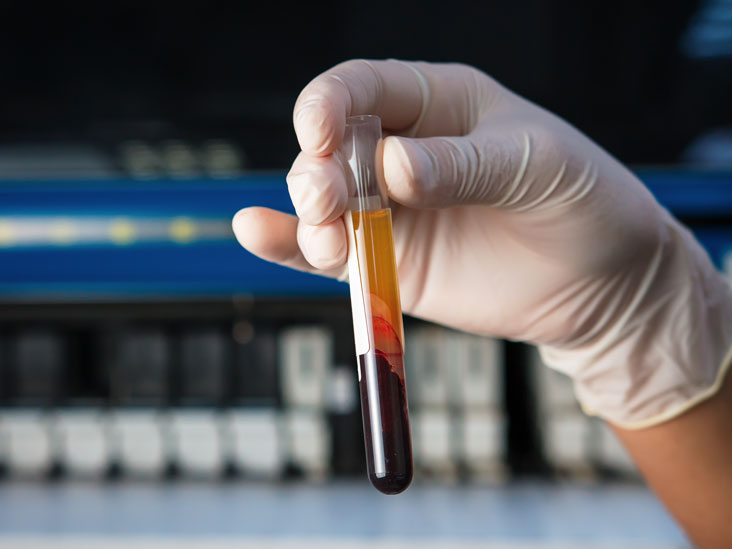The duration required for a blood clot to form is measured with a prothrombin time (PT) test. The results of a PT test are used to calculate something called an INR.
The liver produces the protein called thrombin. This substance is one of many referred to as blood coagulation factors. Your clotting factors come together after a cut or other accident that causes bleeding to form blood clots. The quantity and efficiency of the coagulation factors in your blood determine how quickly your blood clots. You might bleed excessively following an injury if your blood clots too slowly. Otherwise, dangerous clots may develop in your veins or arteries if your blood clots too quickly.
A PT/INR test helps determine the origin of clotting or bleeding disorders. It also looks at the efficacy of a drug that prevents blood clots.
What does it serve?
A PT/INR test is used most frequently to:
- View the effectiveness of warfarin – a blood-thinning medication that treats and prevents harmful blood clots. Warfarin is sold under the brand ‘Coumadin’.
- Identify the cause of abnormal blood clots.
- Determine the cause of unusual bleeding.
- Examine the clotting process before surgery.
- Look for liver issues.
Along with a PT/INR test, a partial thromboplastin time (PTT) test is regularly done. A PTT test looks for clotting issues as well.
Is there anything I must do to get ready for the test?
You should postpone taking your daily dose of warfarin until after the test. Your health professional will let you know if any special instructions are needed.
Does the test involve any risks?
The risk in blood work is extremely low. The majority of side effects are temporary. But you may feel some slight pain or contusions in the area where the needle was inserted.
What do the findings indicate?
If you were checked because you take warfarin, your results would likely be displayed as INR levels.
To make it simpler to compare results from various labs and test methodologies, INR levels are frequently used.
When you take warfarin:
- You may be at risk for harmful blood clots if your INR levels are too low.
- If your INR is too high, you could be at risk for life-threatening bleeding.
Your healthcare provider will probably change your warfarin dose to reduce these risks.
In case you are not taking warfarin and your INR or prothrombin time results are not normal, it means:
- A bleeding disorder – a condition in which the body can’t clot blood properly, causing excessive bleeding
- A clotting disorder – a condition in which the body forms excessive clots in arteries or veins
- Liver disease
- Vitamin K deficiency – when it comes to blood clotting, vitamin K is essential.
Why is a PT/INR test necessary?
If you regularly take warfarin, you might require this test. The test ensures that you are taking the appropriate dosage.
You might need this test if you have signs of a hemorrhagic or clotting disorder.
The following are signs of a bleeding disorder:
- Unaccounted-for heavy bleeding
- Easily bruising
- Abnormally severe nosebleeds
- Unusually heavy periods of menstruation in women
The following are signs of a clotting disorder:
- Leg discomfort or soreness
- Ankle swelling
- Legs with redness or red streaks
- Difficulty in breathing
- Cough
- Chest pain
- Fast heartbeat
Additionally, if you are scheduled for surgery, you might require a PT/INR test. It ensures that your blood clots normally, preventing excessive blood loss during the procedure.
What occurs throughout a PT/INR test?
A fingertip or vein blood sample may be used for the test.
For a vein-based blood sample:
A tiny needle will be used by a medical professional to draw blood from a vein in your arm. After the needle is inserted, a tiny amount of blood is collected into a test tube or vial. The needle entering or leaving your body might cause a small amount of pain. Typically, this takes only a few minutes.
For a fingertip blood sample:
A fingertip test can be performed at home or in a lab. Your doctor might advise routinely testing your blood with a PT/INR test kit if you take warfarin. The healthcare provider will:
- Make a small puncture in your fingertip with a needle.
- Take a small amount of blood, and then apply it to a test strip or other specialty device.
- Insert the tool or test strip into the computerized reader.
- If you use an at-home test kit, you must discuss the results with your provider.
What distinguishes a partial thromboplastin time (PPT) test from a prothrombin time test?
Your plasma is examined for abnormal coagulation factors with a PPT test. A coagulation factor that aids in forming blood clots, prothrombin, is measured using a PT test.
